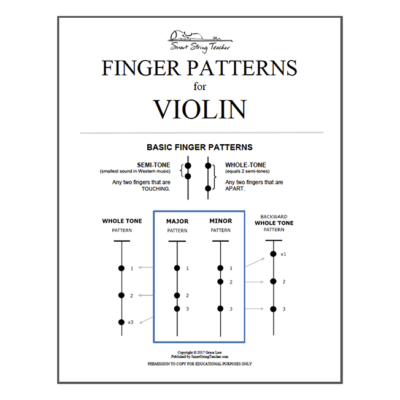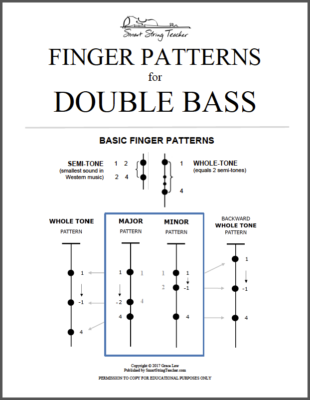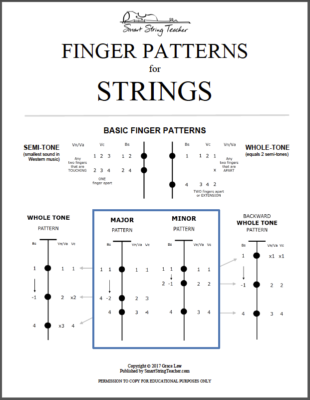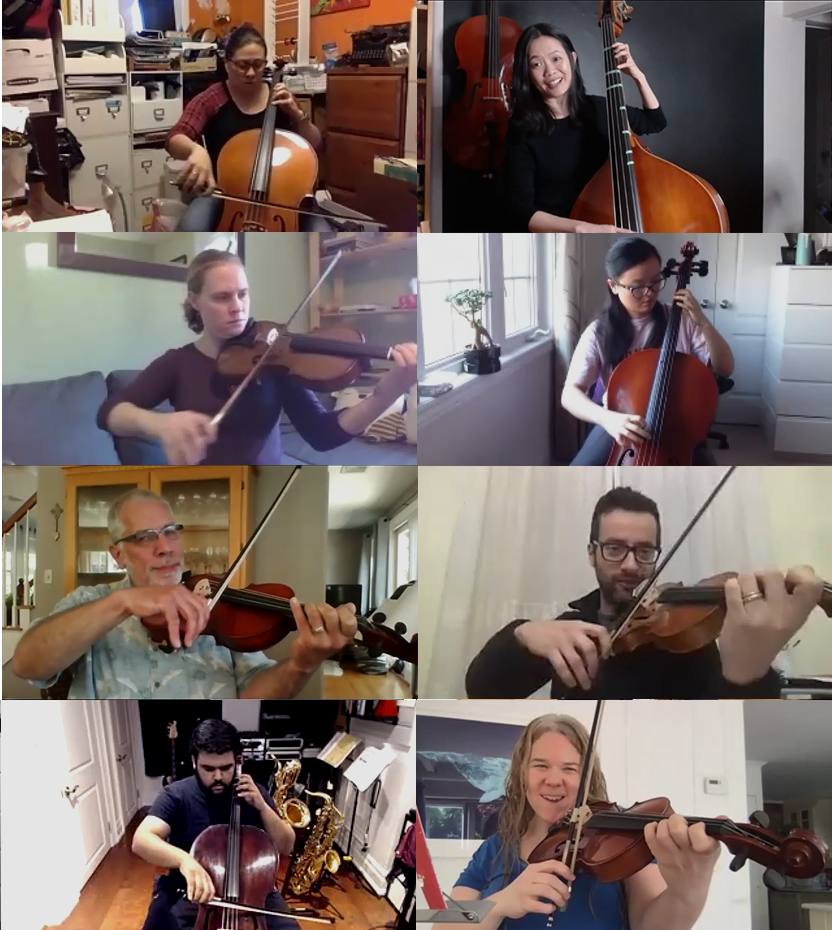Using just six finger patterns can greatly simplify how you teach violin, viola, cello and double bass and help you achieve more in less time. I first wrote about The Six Basic Finger Patterns back when I started this blog. Since then, I’ve created many materials and strategies you can use to help you teach using finger patterns and I can’t wait to share them with you.
To help you start teaching by finger pattern this year, I’ve modified the cover of my Smart Scales for Strings scale book and made them into handouts you can download and use with your students. You can print the six basic patterns on one side, and the advanced finger patterns on the other side for when your students are ready for variations. There are also abbreviations that you can use for quizzes and finger chart drawing practice.
Finger Pattern Handouts
Benefits of Teaching by Finger Pattern
If after my first article you still need a few more reasons to convince you to start teaching by finger pattern, here are some of the benefits I have found when using finger patterns:
- They allow me to address the fingering of all the instruments at the same time, without referring to individual fingers or note names.
- They allow me to easily correct fingering problems.
- They allow me to easily review the fingering for a key before beginning a scale or piece.
- They allow me to easily evaluate whether or not a student has memorized multiple scales without having them take time to perform them.
- They make it easy to teach accidentals.
- They make it easy for violins and violas to know where to place the 4th finger.
- They make it easy for double basses to understand and start shifting right away.
- They make it easy to describe fingerings for shifting on all instruments.
- They introduce tonality and make students aware of the sounds made by different combinations of whole tones and semitones.
- Students learn to play in tune much more easily and much sooner.
- Students become more aware of playing out of tune.
I am sure you will think of more benefits as you incorporate them into your own teaching!
Download these free finger pattern handouts for your students now!








Leave a Reply